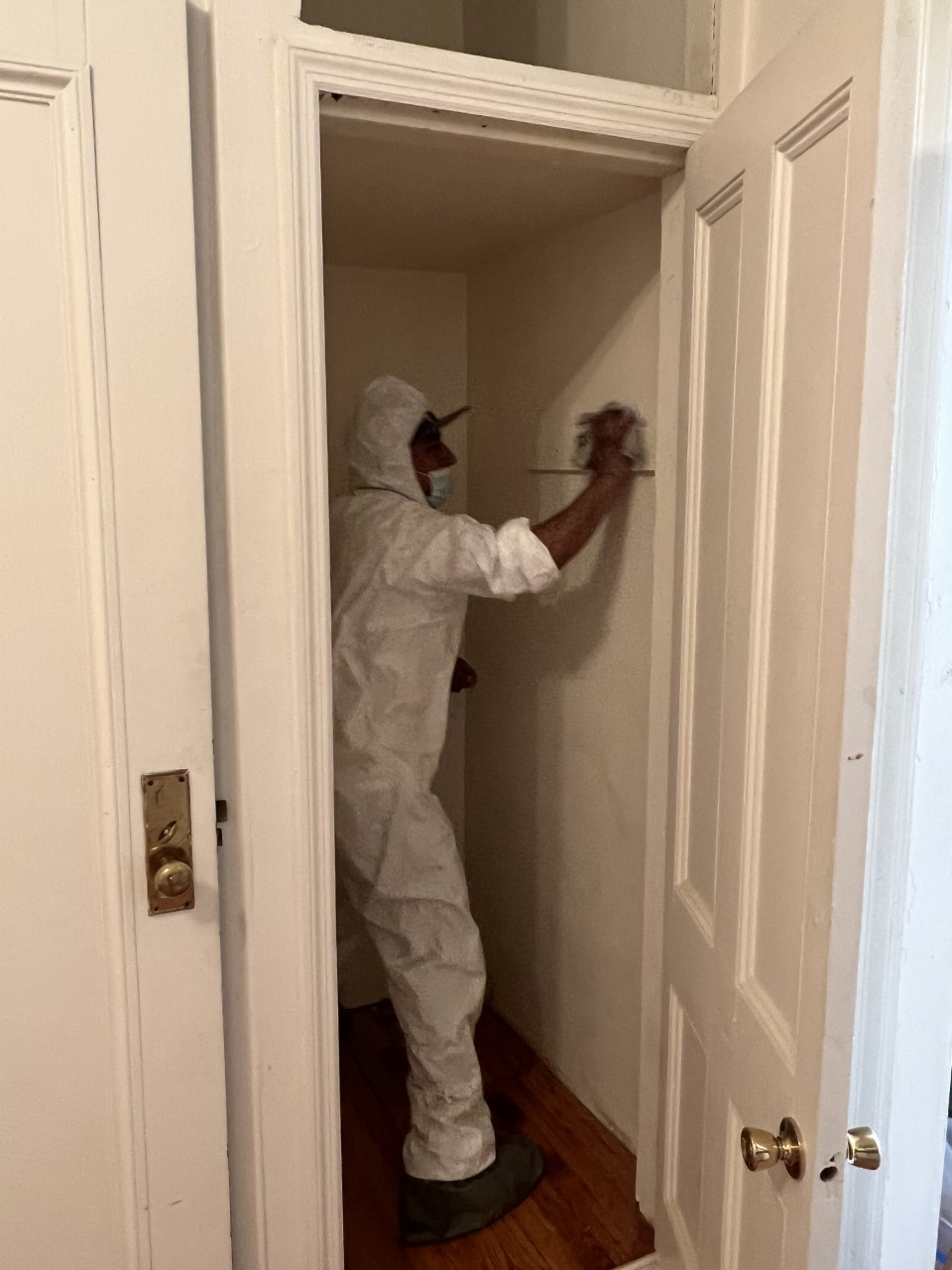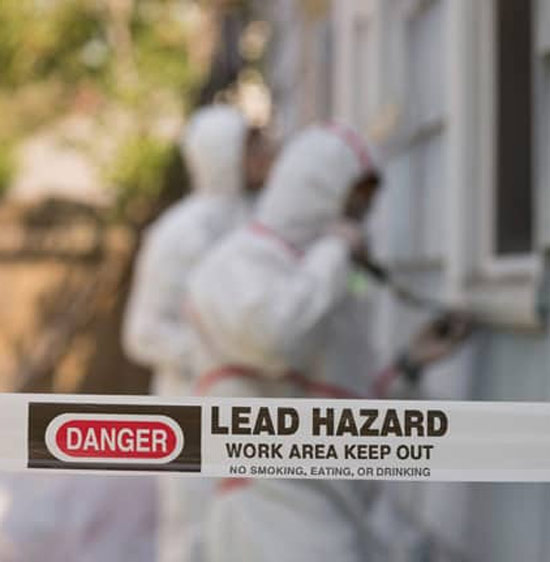Vital Tools and Approaches for Efficient Lead Violation Cleanup
Resolving lead offenses successfully demands a comprehensive technique that blends the right devices with strategic techniques. Simultaneously, the usage of specialized cleanup tools, such as HEPA vacuum cleaners and lead-specific cleansing agents, is vital for complete contaminant removal. Reliable containment methods, consisting of plastic bed linen and negative air pressure systems, are necessary to prevent the spread of dangerous materials.
Individual Protective Equipment
Personal safety tools (PPE) is an essential component in the effective monitoring of lead contamination cleaning. The essential PPE for lead cleaning consists of respirators, protective garments, gloves, and eye protection.
Respirators, especially those geared up with HEPA filters, are crucial for filtering air-borne lead particles, protecting against breathing. Safety apparel, consisting of coveralls and non reusable matches, stops lead dirt from sticking to employees' garments, lowering the threat of additional contamination.
Furthermore, strenuous training on the correct use and maintenance of PPE is essential. Employees have to be enlightened on donning and doffing treatments to stay clear of contamination. Routine inspections and replacements of PPE elements are needed to keep their protective abilities, making certain a secure and certified cleanup procedure.
Specialized Cleaning Equipment

An additional vital device is the wet/dry vacuum, which can effectively clean up both dirt and liquid pollutants. These vacuums often feature HEPA filters to provide an added layer of security. Damp cleans or tack towels are likewise essential for surface cleaning; they are especially designed to capture and hold lead particles, lowering the threat of spreading out contamination.
For even more persistent deposits, specialized lead-removal cleaner are called for. These representatives are developed to break down lead particles, making them less complicated to get rid of. Scrub brushes with tough bristles can help in this procedure, especially on harsh surface areas where lead dust has a tendency to stick more strongly.
Additionally, encapsulants are made use of to seal lead-contaminated surfaces, avoiding the launch of lead dust. These specialized paints and coatings are developed to comply with various substrates, supplying a long-lasting service for lead control.
Effective Control Techniques
Efficient containment approaches are critical in mitigating the spread of lead contamination during cleanup tasks. Implementing robust containment strategies ensures that lead fragments do not migrate to untouched locations, thereby safeguarding both employees and the atmosphere. One main technique is using plastic sheeting to secure off contaminated areas. Durable polyethylene barriers can be set up from flooring to ceiling to develop a regulated workspace, dramatically lowering the danger of air-borne lead dust dispersal.

To enhance containment, encapsulants can be related to surfaces that are not being gotten rid of or disturbed. These specialized coverings bind lead dust, minimizing its schedule for resuspension. In addition, all employees should put on proper Personal Safety Tools (PPE), including respirators and non reusable suits, to stop contamination spread.
Safe Disposal Practices
Making certain secure disposal practices is an essential element in the administration of lead contamination cleaning. Correct disposal minimizes the risk of lead returning to the atmosphere and jeopardizing public health. The initial step is to identify and set apart lead-contaminated waste from other materials. Secure control utilizing durable, leak-proof containers is crucial to protect against spillage during transport.
Transferring lead waste requires adherence to rigorous guidelines. Making use of certified dangerous waste service providers guarantees that the products are dealt with sensibly. Documents, consisting of materializes detailing the type and amount of waste, must come with shipments to track the waste from the website of origin to its last disposal location.
Designated dangerous waste disposal centers are geared up to take care of lead-contaminated materials securely. These facilities frequently use sophisticated methods such as stabilization, solidification, or pop over here chemical therapy to counteract the lead before disposal. Landfilling in specialized, lined areas that avoid leachate from polluting groundwater is a typical practice for last disposal.
Routine training for employees involved in lead garbage disposal is essential to preserve safety and security requirements and stop unintentional exposure. By sticking to these practices, organizations can substantially lower the environmental and health and wellness impacts connected with lead contamination.
Regulatory Conformity Tips

Following regulatory conformity is vital in the successful implementation of lead contamination cleanup. Comprehending and following federal, state, and regional laws makes certain not only the safety and security and wellness of people however also the legal and financial important link wellness of the clean-up organization. The Epa (EPA) establishes rigid criteria, such as the Lead Remodelling, Repair Work, and Paint (RRP) Rule, which mandates appropriate accreditation and training for professionals handling lead-based tasks.
Conformity starts with a thorough evaluation of suitable laws and policies. Organizations needs to stay upgraded on any legislative adjustments, which can be facilitated with normal training sessions and signing up for sector updates. Paperwork is one more vital compliance aspect; maintaining comprehensive documents of all activities, consisting of inspection reports, staff member training logs, and disposal shows up, is vital.
Furthermore, engaging with accredited lead inspectors or risk assessors guarantees that lead threats are appropriately recognized and reduced. Companies need to impose using Individual Safety Devices (PPE) and guarantee that safety and security protocols are strictly complied with. Lastly, clear communication with stakeholders, including staff members, clients, and regulative bodies, will promote a culture of compliance and accountability, eventually contributing to a much safer and much more reliable lead cleaning process.
Final Thought
Efficient lead offense cleanup requires the assimilation of specialized devices and strategic methods to make sure safety and efficacy. Utilizing HEPA vacuums, specialized cleansing agents, and effective containment approaches such as plastic sheeting and adverse atmospheric pressure systems is necessary. Personal protective tools (PPE) safeguards employees from exposure, while risk-free disposal techniques and stringent adherence to regulatory compliance are crucial for sensibly taking care of harmful waste. Collectively, these steps significantly reduce wellness risks and add to a cleaner setting.